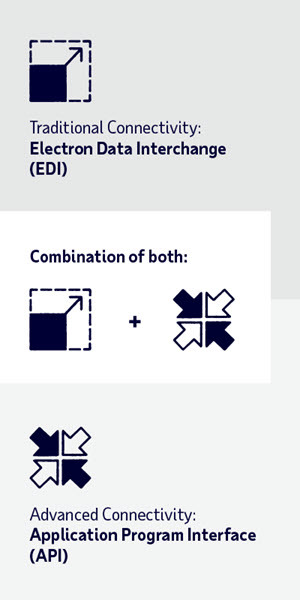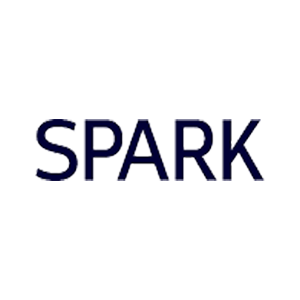How Connectivity Streamlines Benefits Administration and Enhances the Employee Experience

Thanks to ADP partner, Sun Life for this article.
In today's digital workplace, you face the ongoing challenge of managing the complex world of benefits, juggling data across multiple platforms, and ensuring employees have a seamless, error-free experience when enrolling in and using their benefits. As you search for ways to reduce administrative burden and improve efficiency, one powerful solution continues to rise to the top: connectivity.
Connectivity, in the context of benefits administration, refers to the integration of human capital management (HCM) or benefits administration platforms with insurance carriers and other benefit providers. When done right, connectivity can help you save time, reduce data errors, streamline workflows, and improve the overall benefits experience for employees. In this article, we'll explore how connectivity works, the key problems it solves, and how employers can harness it to create a modern, efficient HR ecosystem.
Transforming benefits administration for a better employee experience
Benefits administration often involves entering the same employee data into multiple systems, from payroll to health insurance to disability coverage. This manual, error-prone process causes a ripple effect of inefficiencies:
- Data accuracy issues: Mistyped or outdated information can result in incorrect coverage, employee frustration, or even compliance concerns.
- Administrative burden: HR teams often spend hours reconciling data across platforms, responding to inquiries, and fixing avoidable issues.
- Fragmented employee experience: Employees must navigate multiple portals for enrollment, education, and updates, which can lead to confusion, reduced engagement and entry errors.
- Security and privacy risks: The more systems employee data passes through manually, the greater the risk of mishandling sensitive information.
These challenges can be especially hard for HR teams with limited resources that are managing large or growing workforces.
The power of connectivity
Just as we experience seamless integration in our daily lives, like having meeting invites automatically appear in your smartphone's calendar or using a single login for multiple apps, employers can create similarly connected experiences through benefits integration.
Connectivity bridges the gap between HCM and Benefits Administration platforms and insurance carriers by enabling the secure, automated flow of data. This can be accomplished in several ways:
- Traditional Connectivity (EDI): Electronic data interchange (EDI) has long been used to batch-send files on a regular schedule (e.g., weekly or biweekly). While reliable, EDI can have limitations in terms of real-time updates and flexibility.
- Advanced Connectivity (API): Application Programming Interfaces (APIs) allow for real-time data exchange. APIs can instantly update systems when an employee makes a change—such as adding a dependent or updating a home address—minimizing delays and inaccuracies.
- Hybrid Solutions: A blend of EDI and API may be the best solution for some organizations, especially those with varying needs across benefit types or different levels of internal resources.

Solving real pain points in the benefits experience through connectivity
When implemented effectively, connectivity can help resolve the very issues that bog down the traditional benefits processes:
- Improved accuracy: With direct data exchange, there's less opportunity for manual errors and outdated records.
- Time savings: HR teams are likely to spend less time on administrative tasks and more time on strategic initiatives.
- Enhanced security: Automated systems can improve compliance and help reduce the number of touchpoints where sensitive data might be exposed.
- Stronger employee engagement: A seamless experience makes it easier for employees to understand, access, and use their benefits, which can ultimately increase satisfaction and retention.
Best practices for implementing connectivity
- Assess your current systems and vendor capabilities: Understand what your HCM platform and carriers can support. Some carriers may offer advanced APIs, while others still rely on EDI.
- Prioritize high-impact connections: Focus on integrating benefits that require the most frequent updates or are most likely to be error-prone.
- Collaborate with your partners: Your HCM or benefits administration provider and insurance carriers are key collaborators in this process. Leverage their expertise to find the right mix of connectivity and best practices.
- Think long-term: Even if you start with traditional methods, consider how you can evolve toward real-time data exchange over time.
Connectivity in action: A stronger partnership for a better benefits experience
For HR professionals navigating the complexities of benefits administration, connectivity is more than a technical upgrade; it's a strategic investment in efficiency, accuracy, and employee satisfaction. Whether your organization is just beginning its integration journey or looking to upgrade existing systems, embracing connected solutions can help unlock new value across your entire benefits ecosystem.
"Connectivity is the foundation of a modern benefits experience; it's what allows us to deliver accuracy, speed, and simplicity at scale. Our partnership with ADP brings this to life, helping employers simplify administration while making it easier for employees to access the protection they need, when they need it most," says Ted Phillips, AVP of BenTech Partnerships at Sun Life.



